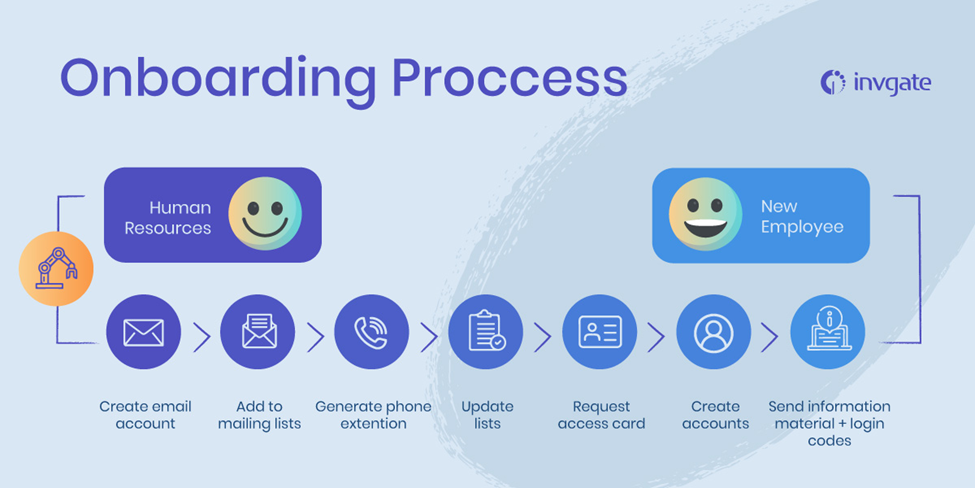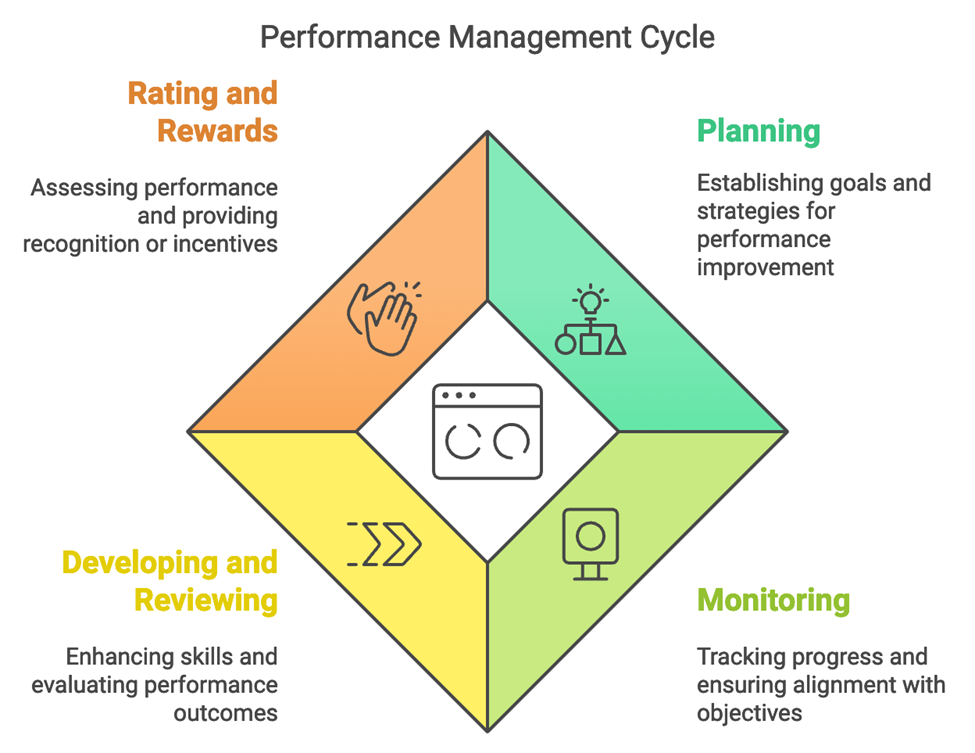Why Workflow Automation Matters for HR
9/15/2025
Introduction

HR workflow automation refers to the use of digital tools and technologies to streamline repetitive, manual processes within the human resources function. Instead of relying on paper forms, emails, or manual data entry, process automation in HR enables tasks such as approvals, notifications, and document management to run seamlessly with minimal human intervention. This shift is a core part of HR digital transformation, allowing organizations to modernize operations while reducing administrative burdens. As a result, HR teams can dedicate more time to strategic initiatives like employee engagement, talent development, and organizational growth. Today, HR departments are increasingly adopting HR efficiency tools to overcome challenges such as rising workforce complexity, compliance demands, and the need for real-time insights. Automating workflows not only minimizes errors but also ensures consistency, speed, and transparency across the employee lifecycle. From onboarding and performance management to payroll and leave approvals, automation empowers HR professionals to deliver better employee experiences while supporting overall business agility. In this article, we will explore five practical HR automation use cases that demonstrate how organizations can enhance efficiency, improve accuracy, and unlock new value through smarter digital processes.
Why Workflow Automation Matters for HR
Without automation, HR teams often find themselves overwhelmed by manual paperwork, inefficient approval processes, and the constant risk of compliance errors. Repetitive tasks such as data entry, leave tracking, or document filing consume valuable time and create bottlenecks that slow down operations. This lack of HR process optimization not only reduces productivity but also increases the chance of missed deadlines, inaccurate records, and inconsistent employee experiences. In today’s fast-paced work environment, these inefficiencies can hinder HR from playing a strategic role in business growth. By embracing digital HR solutions, organizations unlock a wide range of benefits. Repetitive task automation eliminates routine workloads, giving HR professionals more time to focus on people-centric initiatives like talent retention and workforce development. The adoption of HR efficiency tools delivers measurable outcomes: faster processing times, reduced costs, and higher employee satisfaction due to streamlined, transparent processes. Moreover, HR software benefits extend beyond productivity—automation strengthens compliance by ensuring standardized, auditable practices. As companies advance their HR digital transformation, workflow automation is no longer optional but central to modern HR strategy, enabling HR leaders to drive both operational excellence and long-term organizational success.
Top 5 Ways HR Departments Can Use Workflow Automation

1)Automating Employee Onboarding
Employee onboarding is often one of the most document-heavy and time-consuming HR processes. Without automation, HR teams must manually collect forms, track paperwork, and coordinate training schedules—leading to delays and a fragmented experience for new employees. New hire onboarding automation solves these challenges by digitizing essential steps such as form completion, document collection, and training schedule assignments. With HR onboarding software, everything from tax forms and contracts to compliance documents can be completed electronically, while automated workflows ensure that new hires receive timely reminders and access to required training. The benefits of automating onboarding are significant. HR teams save time by eliminating repetitive administrative tasks, while new employees enjoy a smoother, faster start with clear guidance and fewer delays. Streamlined onboarding helps reduce first-day stress, creating a positive first impression that enhances long-term engagement and retention. Automated processes also improve accuracy and compliance, ensuring all necessary steps are completed without gaps. Ultimately, new hire onboarding automation enables HR departments to deliver a consistent, professional, and engaging employee experience while freeing staff to focus on strategic priorities such as culture-building and talent development.
2)Leave and Attendance Management
Managing employee leave and attendance manually often results in confusion, errors, and unnecessary back-and-forth between HR, managers, and staff. Paper forms, emails, and spreadsheets make it difficult to maintain accuracy, leading to problems such as overlapping leave approvals, inconsistent records, and compliance risks. Absence management automation addresses these challenges by streamlining leave requests, approvals, and tracking through digital workflows. Employees can submit requests online, managers can approve them with a click, and HR gains centralized oversight of attendance patterns—all within a single platform. Integrated HR time-tracking tools further enhance accuracy by automatically recording work hours, overtime, and absences. The benefits of automating leave and attendance management are substantial. Automation eliminates errors caused by manual record-keeping, ensuring compliance with labor laws and internal policies. It also provides real-time visibility into staffing levels, helping managers make informed scheduling decisions and avoid productivity gaps. For employees, the process becomes transparent and hassle-free, boosting trust and satisfaction. For HR, automation reduces administrative burden while offering reliable data that supports workforce planning and reporting. By replacing manual processes with automated systems, organizations achieve greater efficiency, accuracy, and control over one of the most critical aspects of workforce management.
3)Recruitment and Applicant Tracking
Recruitment is one of the most resource-intensive functions in HR, often involving dozens of applicants, multiple stakeholders, and tight timelines. Traditional methods that rely on manual resume screening, email exchanges, and spreadsheet tracking are slow and prone to errors. Applicant tracking systems (ATS) transform this process by powering an automated recruitment process. These systems can quickly filter resumes based on job requirements, schedule interviews automatically, and send timely updates to candidates. By digitizing and streamlining the hiring workflow, HR departments gain the ability to manage large applicant pools efficiently and ensure consistency at every stage of recruitment. The benefits of recruitment automation are clear. Automating routine tasks significantly reduces hiring time, allowing organizations to secure top talent before competitors do. Candidate communication becomes faster and more consistent, creating a smoother and more transparent experience for job seekers. For HR teams, an optimized hiring workflow means fewer administrative burdens and more focus on evaluating candidate quality and cultural fit. At the same time, the data and insights generated by applicant tracking systems help refine future recruitment strategies. Overall, automation in recruitment not only accelerates hiring but also strengthens employer branding through a more professional and engaging candidate journey.
4)Payroll and Benefits Administration
Payroll and benefits management are critical yet complex HR functions that require accuracy, timeliness, and strict compliance. When handled manually, payroll calculations, payslip generation, and benefits tracking can become highly error-prone, resulting in dissatisfied employees and potential compliance risks. An automated payroll system addresses these challenges by streamlining calculations, automating payslip distribution, and ensuring accurate tax deductions. Integrated benefits management tools further simplify the process by managing health plans, retirement contributions, and other employee perks within the same platform. Combined with HR compliance automation, these tools help organizations meet regulatory requirements with minimal effort. The advantages of payroll and benefits automation go beyond efficiency. Automated systems ensure payroll accuracy, reducing costly mistakes and boosting employee trust. They also cut down processing times, freeing HR teams from repetitive calculations and administrative tasks. This reduction in workload allows HR to focus on higher-value initiatives while maintaining compliance with ever-changing labor and tax regulations. From faster payroll cycles to transparent benefits administration, automation delivers a seamless experience for both employees and HR staff. Ultimately, digitizing payroll and benefits processes supports operational excellence, strengthens compliance, and enhances overall workforce satisfaction.

5)Performance Management and Employee Feedback
Traditional performance reviews often suffer from inconsistent schedules, missing documentation, and a lack of actionable insights. Managers may forget review deadlines, feedback can be subjective or incomplete, and goals are not always tracked effectively. Automated performance appraisal systems address these issues by sending review reminders, centralizing feedback collection, and enabling continuous goal tracking throughout the year. With integrated employee engagement tools, feedback becomes ongoing rather than a once-a-year task, creating a culture of continuous improvement. These digital solutions ensure that evaluations are fair, structured, and transparent, supporting both employee development and organizational growth. The benefits of automating performance management are far-reaching. Automated reminders and workflows ensure evaluations are conducted on time and consistently across teams. The data collected through these systems can be analyzed using HR analytics, providing valuable insights into workforce performance, skill gaps, and training needs. This data-driven approach enables HR leaders and managers to make informed decisions that strengthen employee development strategies. For employees, timely feedback and clear goal tracking enhance motivation and engagement, while HR benefits from streamlined processes and reduced administrative burden. Overall, performance management automation creates a more efficient, fair, and strategic approach to employee growth and organizational success.
Choosing the Right HR Workflow Automation Tools
Selecting the right solution for workflow automation in HR requires a careful evaluation of features that align with organizational needs. The most effective HR automation tools should offer seamless integration with existing systems such as payroll, applicant tracking, and communication platforms. Ease of use is another critical factor—if the interface is too complex, adoption rates will drop and efficiency gains will be lost. Scalability is equally important, ensuring that HR process automation can grow with the organization as workforce size and needs evolve. Additional features such as mobile accessibility, customizable workflows, and analytics dashboards can further enhance the value of these tools. Several leading platforms have gained popularity for their ability to streamline HR operations. BambooHR is well-known for its user-friendly design and strong onboarding and employee management capabilities. Zoho People offers flexibility and affordability, making it a good option for small to mid-sized businesses looking to automate core HR tasks. Workday, on the other hand, is a comprehensive enterprise solution with powerful analytics and scalability for large organizations. By selecting HR automation tools that balance integration, usability, and scalability, companies can maximize the benefits of HR process automation while supporting long-term HR digital transformation goals.
Conclusion
From new hire onboarding automation to leave and attendance management, recruitment tracking, payroll and benefits administration, and performance management, the use cases of workflow automation in HR highlight its transformative potential. By replacing manual, repetitive tasks with HR automation tools, organizations not only improve efficiency and compliance but also free HR teams to focus on strategic initiatives such as talent development and employee engagement. HR process automation is no longer a future trend—it is a necessity for building agile, employee-centric organizations. Now is the time to explore digital solutions that can accelerate HR transformation and drive long-term success.